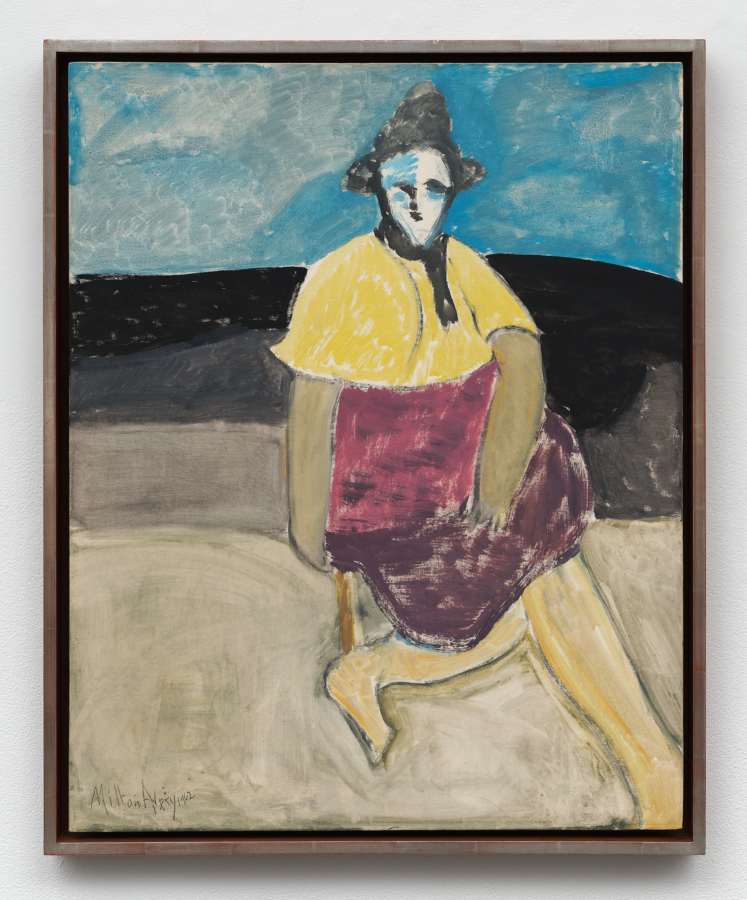November 27, 2019
Download as PDF
View on Juxtapoz

Solitude 2018, oil on canvas, 48 × 36 inches
At the beginning of last month, I was saddened to hear that the brilliant self taught painter, Matthew Wong had passed away. I had come to know of him and his work earlier this year when he participated in a panel discussion about contemporary landscape painting hosted by the Whitney. There were many great artists participating, but there was something magical about Matthew.
When it came to his turn at speaking, Mathew fixed his gaze on the viewing room in his mind and spoke a steady stream of mono-toned sentences punctuated by an occasional tic of his Tourettes syndrome. The more he spoke, the more fascinated I became and the more I liked him. He was so incredibly earnest and humble – uncluttered by ego. It was wonderful how he paid special tribute to the nonagenarian Lois Dodd who also sat on the panel with him. He said how part of his process involves looking at paintings in books and that Dodd was a painter he thought about daily. He was especially influenced by her use of windows.

Autumn Nocturne, 2018, oil on canvas, 48 × 72 inches
He shared how he hadn’t actually been painting for very long, but had developed a technique where paintings can be made in one day. He had grown up in Hong Kong and moved to Edmonton, Canada. I asked him after the panel why he had chosen to live in Edmonton rather than a place like New York. He said only that New York is ok to visit, but he would struggle to spend an extended period of time here. His answer revealed more of his sensitive vulnerability and got me thinking about how the colder climates and more rural territories of Canada had helped him find his voice.
The solo exhibition of his works that opened at the beginning of November topped my list of things to see this fall and on an unusually cold Saturday, I paid a visit to Karma’s Lower East Side gallery spaces. The exhibition encompassed both addresses with the larger oil paintings at 188 E 2nd and the gouaches half a block down at 172 E 2nd. Besides the prominence of blue, all the paintings had a keen sense of how light enters into a cold stillness. The exhibition press release describes these effects as the halo of a penumbra – the outer region of a shadow where the light begins to cross over into a darkness, as you might see at the edge of an eclipse.

Fireplace, 2018, oil on canvas, 48 × 36 inches
The work in this solo exhibition was conceived as a corpuscular corollary to his first solo show at Karma which consisted of brightly lit, sunny motifs. In this body of work, painted in the last year of his life, Matthew delved into how blue can “activate nostalgia, both personal and collective.In person, the paintings convey a sense of walking through space, as one feels when looking at a Van Gogh painting. As it turns out these landscapes were inspired by countryside walks. I had first assumed they were based on the rural areas surrounding Edmonton, but they are in fact derived from memories of walks through Sicily with his mother during the fall of 2018 and winter of 2019.

Blue Rain, 2018, oil on canvas, 72 × 48 inches
These gouaches and oils are equally powerful and nostalgic. While the oils evoke the viscerality of physical experience with their large format and more heavily impastoed surface, the gouaches feel like soft memories. I love the gouaches for their simple elegance and intimacy. In the oil paintings, I could see many possible influences at play – elements reminded me of Aboriginal painting or Yayoi Kusama, and sometimes David Hockney landscapes. The cups and vases on the window sills felt reminiscent of Matisse interiors. These possible links should not come as any surprise, considering how important Matthew said it was for him to look at other people’s paintings.
I can’t help but think how the knowledge of his passing changes the way I and other visitors experience and interpret the work. The poetic connection of light passing into the cold stillness of darkness seems all too coincidental. These paintings do not come across as symbolic of death, in the same way as van Gogh’s last finished work with the crows in a field, but they seem to portray the journey of light into the stillness of eternal sleep.



